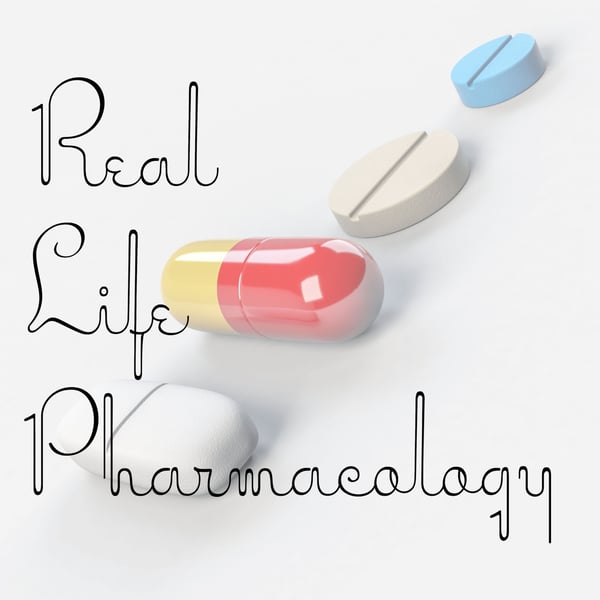Sucralfate Pharmacology
Real Life Pharmacology - Pharmacology Education for Health Care Professionals
Eric Christianson, PharmD; Pharmacology Expert and Clinical Pharmacist
5 • 716 Ratings
🗓️ 27 January 2022
⏱️ 13 minutes
🧾️ Download transcript
Summary
Sucralfate is notorious for drug binding interactions and can reduce the concentrations of many drugs which I cover in the podcast.
Four times daily dosing is a big downside to sucralfate and why it isn't used terribly often for GI issues like esophagitis.
The suspension formulation of sucralfate does contain some sugar so be aware of this in our diabetes patients.
Transcript
Click on a timestamp to play from that location
| 0:00.0 | Hey all, welcome back to the real-life pharmacology podcast. I am your host, pharmacist, Eric Christensen. |
| 0:05.8 | Thank you so much for listening today. As always, go check out real-life pharmacology.com. |
| 0:11.3 | Snag your free study guide on the top 200 drugs. Great resource for those out in clinical practice. |
| 0:18.5 | Great refresher that way. If you're going through school, |
| 0:21.9 | I try to highlight some of the most important relevant real-world principles, as well as a lot of |
| 0:27.9 | those things that might show up on pharmacology exams and board exams. So again, go get that for |
| 0:33.9 | free, real-life pharmacology.com. Let's get into the drug of the day today, and that is |
| 0:41.5 | sucralphate. Brand name in this medication is caraphate, which I'll probably use that name |
| 0:46.7 | interchangeably here. This is a GI medication gastrointestinal agent. |
| 0:55.9 | I've seen it used in management of stomach ulcers, |
| 1:01.3 | GI symptoms associated with GERD, esophagitis. |
| 1:05.4 | Those are the two primary situations where this med's going to be used. |
| 1:10.2 | Mechanistically, how does it help maybe relieve some of those |
| 1:13.6 | symptoms of esophagitis, for example? So this drug actually forms a coating in the lining of the |
| 1:22.0 | stomach and GI tract. And it does this by binding positively charged proteins and ultimately this coating protects the |
| 1:33.7 | lining of the stomach from stomach acid which is generally what we try to think about |
| 1:40.2 | when we're thinking about esophagitis think about some of our other agents that I've covered |
| 1:44.5 | maybe a Fomodidine or a, you know, protonics, omeprosol, those meds. They seek to reduce the |
| 1:53.1 | production of stomach acid. Sucrophate, caraphate, works to kind of protect the lining of the stomach of the GI tract from that acid. |
| 2:08.3 | On the dosage form side of things, there is a suspension and a tablet. |
| 2:14.8 | So this, as you could imagine, has to be an oral medication. We can't give this medication |
| 2:21.2 | IV because it needs to be in the stomach and creating kind of that protective layer there. |
... |
Please login to see the full transcript.
Disclaimer: The podcast and artwork embedded on this page are from Eric Christianson, PharmD; Pharmacology Expert and Clinical Pharmacist, and are the property of its owner and not affiliated with or endorsed by Tapesearch.
Generated transcripts are the property of Eric Christianson, PharmD; Pharmacology Expert and Clinical Pharmacist and are distributed freely under the Fair Use doctrine. Transcripts generated by Tapesearch are not guaranteed to be accurate.
Copyright © Tapesearch 2025.

